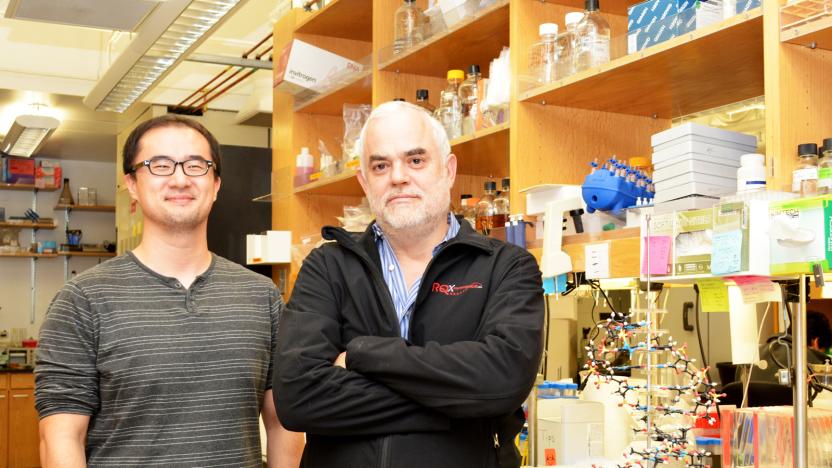ScrippsResearchInstitute
Latest

Scientists make a viable semi-synthetic organism
Scientists at the Scripps Research Institute have already created organisms with synthetic DNA letters, but they weren't ready for the real world when they couldn't even keep the artificial base pair in their genetic code. However, the team has made a lot of progress since then: they've produced the first stable semi-synthetic organism. The bacteria now holds on to its human-created X and Y bases while it grows and divides, much like the natural A, C, G and T bases. The key, researchers say, was to tweak existing techniques.

Scientists create 'semi-synthetic' living cells with extra DNA letters
It turns out that your biology teacher (and a certain 1997 sci-fi flick) got something wrong -- DNA isn't necessarily limited to four letters. Scripps Research Institute scientists tell Wired that they've created living cells which include two artificial letters (that is, nucleotides) in their genetic code in addition to the naturally occurring A, C, G and T. The researchers' primary obstacle was making sure these nucleotides cooperated with the enzymes that copy and transcribe DNA; after that, it was just a matter of getting some E. coli bacteria to accept and propagate the newly augmented sequences.

Biological computer can decode images stored in DNA chips, applications remain unclear
Scientists from the Scripps Research Institute and Technion–Israel Institute of Technology have taken biological computing one step further, with a new molecular machine capable of decoding images stored on a DNA chip. Though it's referred to as a "biological computer," the researchers' machine isn't much like a CPU at all -- unless your CPU was manufactured in a test tube filled with a smoothie of DNA molecules, enzymes and ATP. Once they found the right mix, the team proceeded to encrypt images on a DNA chip and used their Turing machine-like creation to decode them, with fluorescent stains helping to track its progress. The above image, read from left to right, gives a more literal idea of what the system can do -- basically, it takes a hidden image and extracts a given sequence. Storing data on DNA isn't anything new, but decrypting said data in this fashion apparently is. The applications for this kind of organic computing remain a bit fuzzy, but it's pretty clear that whatever follows probably won't look anything like a typical computer. The team's findings were recently published in a paper for the journal Angewandte Chemie, the abstract for which is linked below. For a slightly more readable explanation, check out the full press release after the break.

